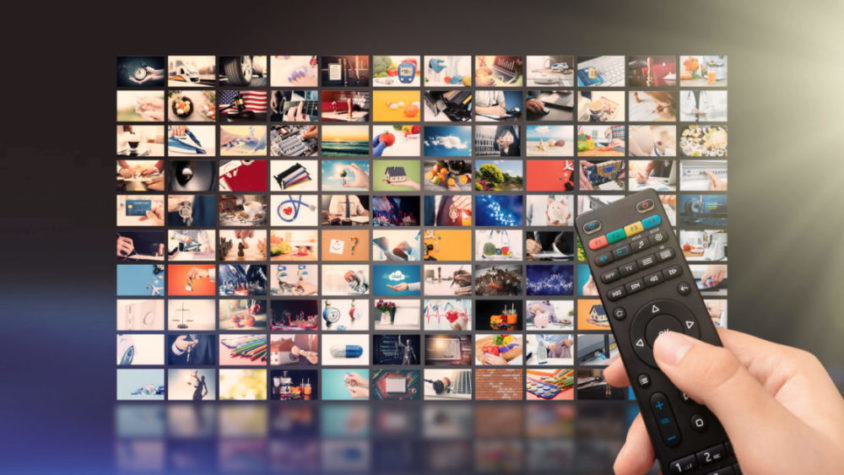M+E Connections

Diversity, Inclusion Deliver for Better Entertainment, Results
Story Highlights
In 2007, the envelope-stuffing Netflix transformed itself into what is now the global streaming entertainment giant with 203 million-plus subscribers in 190-plus countries. At the same time, it acquired fresh video content from those countries to entertain folks in every other country around the globe.
Still not able to (yet) directly serve streaming customers in the Middle Kingdom, Netflix is not above acquiring and sharing Chinese-developed content for subscribers around the globe.
Three years after the #OscarsSoWhite social movement began, Netflix issued its first inclusion report prepared by Verna Myers, a veteran diversity consultant and the company’s first inclusion officer who bluntly told management, “You just aren’t as good as you think you are.”
But at least diversity and inclusion have finally become the concerns and focus — not just for Netflix but for any M&E company that wants to grow and prosper nationally and internationally.
It hasn’t been easy, and it won’t be easy for the industry to reprioritize itself and, in turn, help the world’s viewing public change.
But we’re 100 percent confident it will happen because video content is a common language around the globe and the more, we see it as the natural normal, the more we’ll expect it.
Hattie McDaniel proved that it is a slow, arduous but achievable goal years ago when she put a checkmark beside all of the points people dream of when they come to Hollywood:
• Won an Oscar for best supporting actress in 1939
• Was an invited guest at the ceremonies, not a servant
• Had a steady stream of acting jobs during her career
• Has not one but two stars on the Hollywood Walk of Fame – one for radio, one for motion pictures
The entertainment industry can almost be proud of what it helped her achieve during her lifetime but:
• She received her Academy Award in a segregated ceremony, had to sit in the back with the rest of the cast
• She was never offered a leading role but a supporting role, often as a servant
• She wanted to be buried in Hollywood when she died in 1952 but racism stood in the way until 1999 when she was finally memorialized at the Hollywood Forever Cemetery
She was not only a woman but a woman of color. Despite her accomplishments, even the NAACP complained because of her stereotyped servile roles.
Her response was, “I’d rather play a maid than be one,” and “Why should I complain about making $700 a week playing a maid because if I didn’t, I’d be making $7 a week being one?”
She was right … they were right.
Even though it has been difficult the past few years as the industry struggles to address problems like #MeToo and #OscarsTooWhite, she probably would have been encouraged by the limited progress we have made … even if it has been 82 years in the making.
Actually, there have always been roles for actors of color or alternative lifestyles, but they were mostly stereotypical. Eliminate the stereotype and the results can be surprising, breathtaking.
A few Sundays back, we decided to take a break and watch a no-brainer Tubi film. We scrolled by something from 2016 with Eddie Murphy on the cover called Mr. Church. Figured what the heck, should be funny with Eddie in it and certainly won’t require a lot of heavy thinking.
Wrong!
The movie was filled touching, unconditional love. Made us think there are probably hundreds of video stories we missed or deliberately passed on because we “knew” what it was going to be like.
We wondered how many male/female/BBOC/LGBTQ people in the industry never got their chance because they didn’t “fit the mold” as a producer, director, crew member, actor.
 Thanks to the company’s annual inclusion report and Netflix management’s understanding, or at least it’s awareness that it needs to look for candidates in nontraditional ways, it is creating opportunities for Black candidates. Programs include its Netflix Virtual HBCU Boot Camp and partnering with organizations like Techqueria and Ghetto Film School to strengthen bonds with Black, Latinx, LGBTQ+ and Asian American candidates.
Thanks to the company’s annual inclusion report and Netflix management’s understanding, or at least it’s awareness that it needs to look for candidates in nontraditional ways, it is creating opportunities for Black candidates. Programs include its Netflix Virtual HBCU Boot Camp and partnering with organizations like Techqueria and Ghetto Film School to strengthen bonds with Black, Latinx, LGBTQ+ and Asian American candidates.
They are also showing the industry that diverse storylines are good for the bottom line because they are attractive to its global viewer base.
Slowly, the industry is recognizing that issues like diversity/inclusion aren’t problems but rather opportunities they need to address head-on.
This season, five women were nominated for best director Oscars but for the Golden Globes, none of the black-led films were nominated.
They weren’t just good, they were darn good – One Night in Miami, Ma Rainey’s Black Bottom, Judas and the Black Messiah, Da 5 Bloods.
The worst recognition was that the two male nominees (David Fincher, Aaron Sorkin) had budgets of tens of millions to produce their films.
The women only got $5 million-$16 million for their projects.
Spike Lee’s Da 5 Bloods was on a bunch of Britain’s BAFTA long list categories (and on a number of U.S. award lists). Korean director Bong Jung-Ho made history last year winning the best English language picture Oscar for Parasite, but it was like the Academy said one foreign winner was enough.
Making movies and/or series is a tough, ruthless, tangible/intangible business that require illusive universal appeal. And that’s on a good day.
You have to have a great story to begin with; then a team that encompasses just the right mix of every race, class, gender, sexual-orientation, age, religion and social situation to help the project appeal to the broadest possible audience.
Sure, you have to satisfy underwriters, studio/theater/channel/streaming service executives; political/societal groups plus award committee members (peers); and just for the heck of it, the entertainment hunger of ticket holders and sofa viewers.
It’s no wonder people in this industry have huge egos, thin skins, an ultra-sense of paranoia and a fire-in-the-gut need to share a story with the world. We’re especially glad for their desire — and creative ability — to tell a story and point a spotlight on an issue in a natural, educational, informational and entertaining way.
Diversity and inclusion has been a complex, whispered issue for a long time. Doing the right thing is finally becoming important because people want and expect to view content that includes people like them with content that resonates with them.
The problem is it won’t happen overnight, and it won’t be easy. Some say to simply establish quotas and BAM! a diverse workforce for the industry will happen. The problem with this approach is that organizations fill quotes to fill quotas. People get jobs they aren’t trained for and aren’t qualified for. Without proper training and mentoring, they fail the company and themselves.
 Instead, Netflix took the more enlightened approach: find and place the best possible individuals in each position and work with them to succeed. That means helping women and minorities get those skills to increase the pool of potentially qualified candidates.
Instead, Netflix took the more enlightened approach: find and place the best possible individuals in each position and work with them to succeed. That means helping women and minorities get those skills to increase the pool of potentially qualified candidates.
To prosper, Netflix — and every organization inside and outside of the M&E industry — still needs to focus on quality and the potential of the individual, not a sex, ethnic, orientation number.
At the same time, firms need to work with institutions and organizations to interest and prepare the next generation of women and minorities to prepare them to develop and deliver tomorrow’s content — executives, producers, directors, cinematographers, production/postproduction crew members.
As Anita Hill, of Brandies University said, “The entertainment industry has the unique potential to tell the stories of today’s richly diverse world. But to get there, the barriers to underrepresented people being valued and in the room where it happens must be eliminated. And once they do get into the room where it happens, they must not be the only one.”
To improve diversity at all levels — especially in the content you see — Netflix recently said the company will invest $100 million over the next five years to support underrepresented communities looking to work in the content industry.
Andy Marken – [email protected] – is an author of more than 700 articles on management, marketing, communications, industry trends in media and entertainment, consumer electronics, software and applications.









